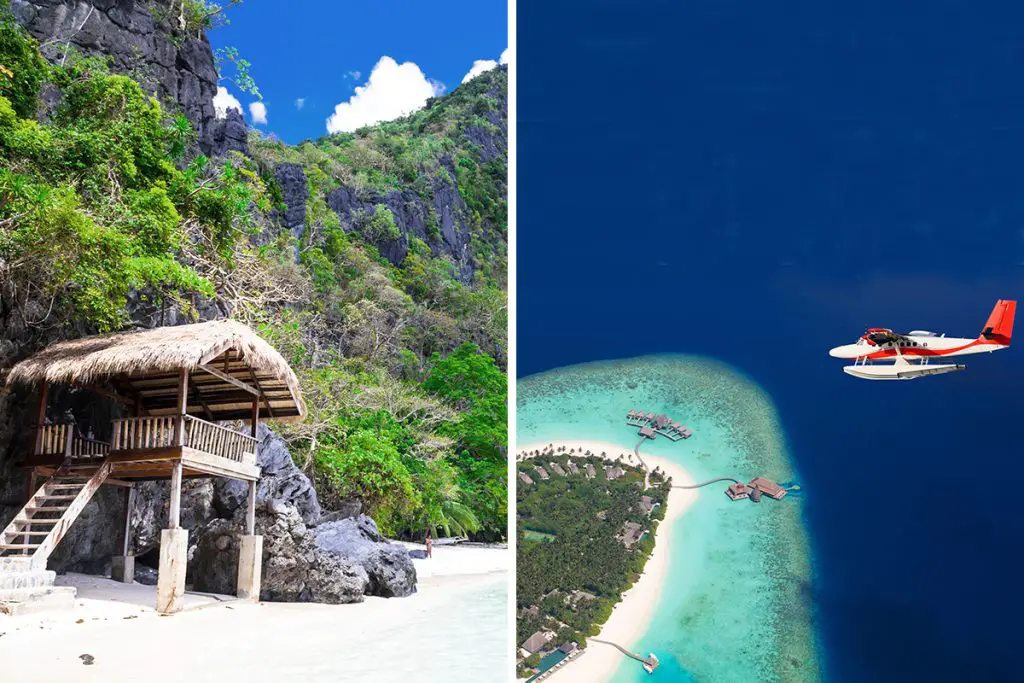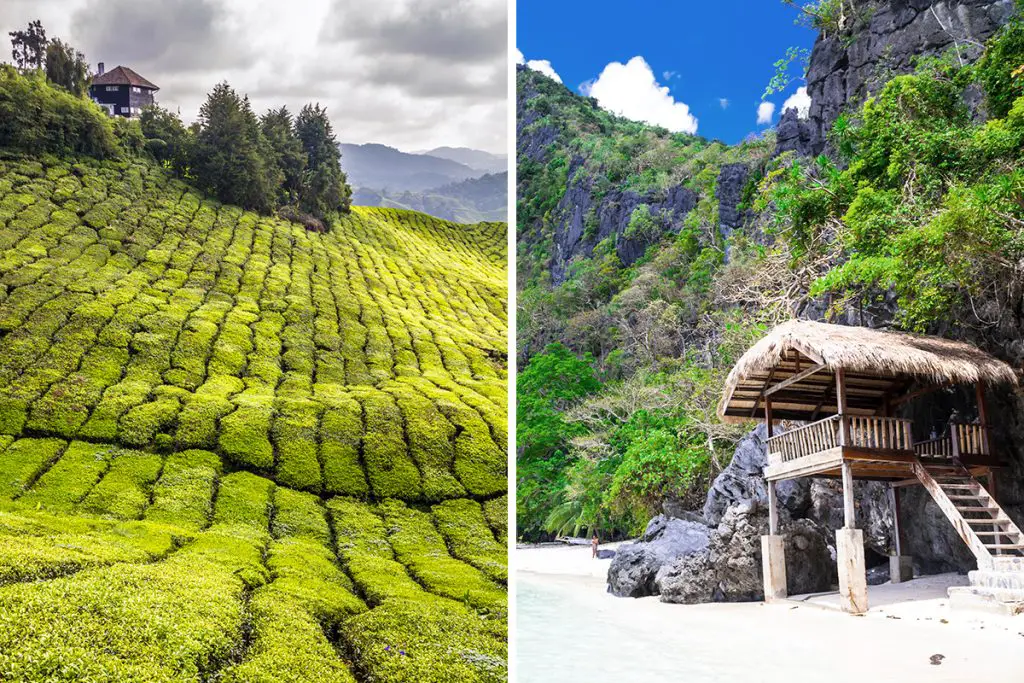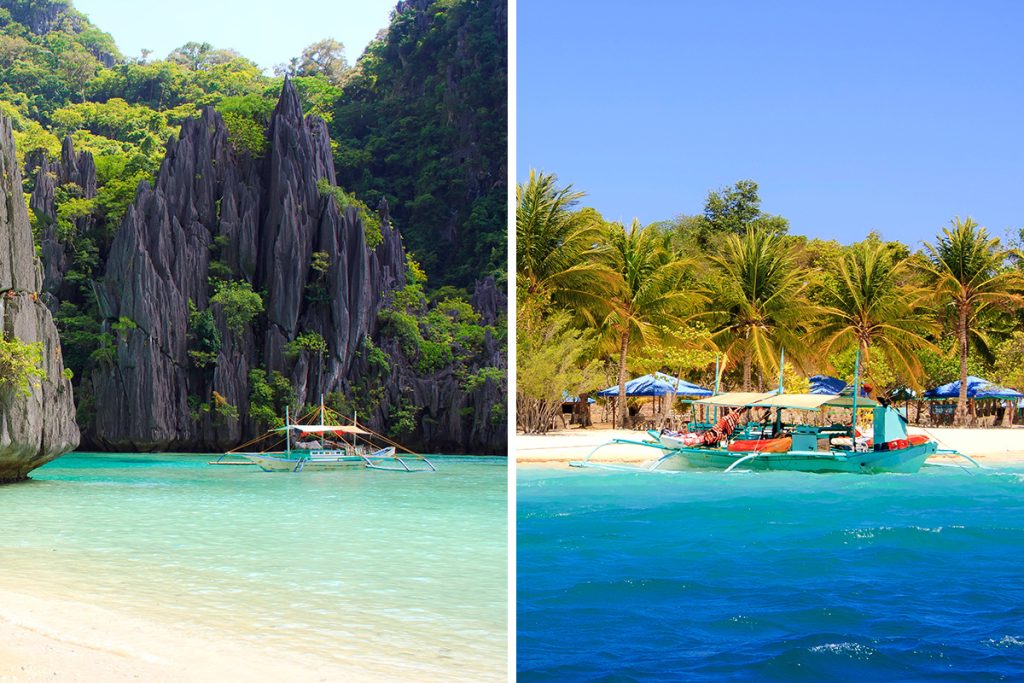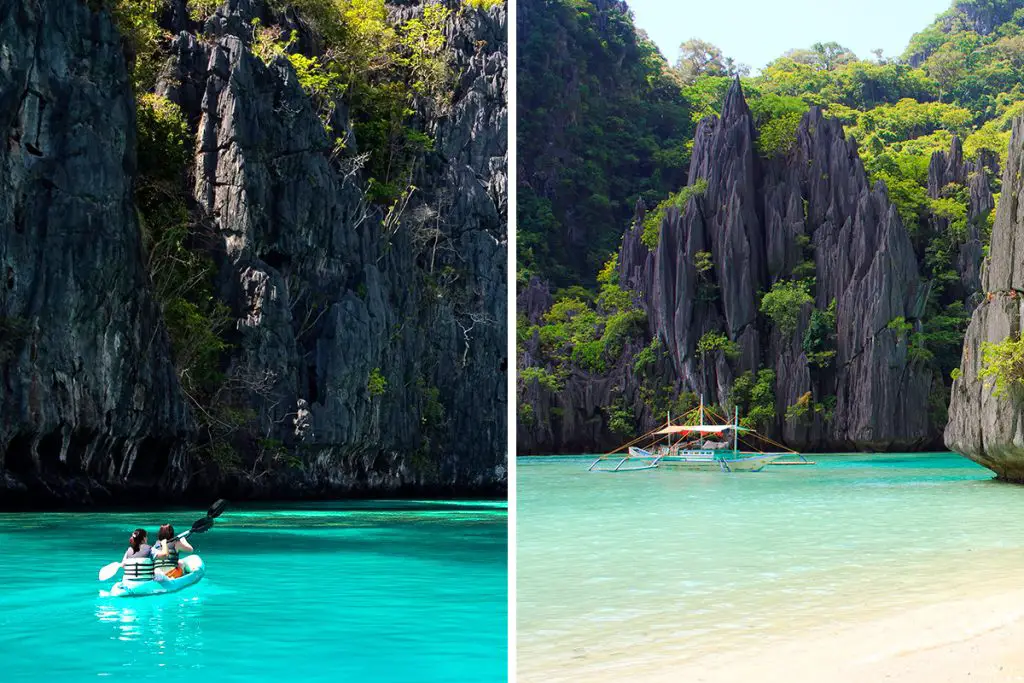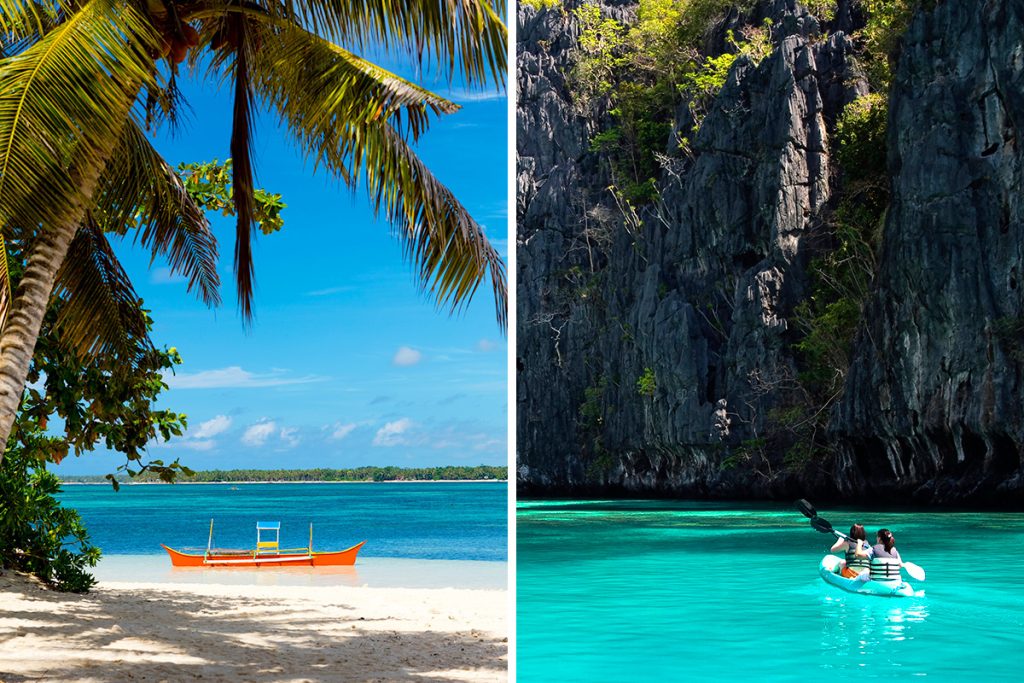Casting your eyes over these two distinct destinations, you might find yourself captivated by Manila’s pulsating energy or enchanted by Cebu’s harmonious blend of old and new. These Filipino cities, brimming with life and lore, invite you to embark on a journey through their histories and cultures. Don’t you want to delve into their fascinating tales and vibrant streets?
History & Culture
In the realm of history and culture, both Manila and Cebu are distinguished by their vibrant tapestries. Each carries the echoes of a past intertwined with foreign influences and resilient local traditions. Yet, their cultural canvases are as different as they are similar.
Manila, the Philippines’ bustling capital, is like a living museum. It showcases a blend of Asian, Spanish, and American histories. Founded in 1571, Manila was a strategic outpost for Spanish explorers and later became an important part of America’s Pacific empire.
This city, shaped by centuries of colonial rule, is a testament to the resilience and adaptability of its people. The unique mix of architectural styles, local traditions, and foreign influences reflects its storied past.
Cebu, on the other hand, is not only the oldest city in the Philippines but also the birthplace of Christianity in the country. Cebu’s history is a fascinating tale of indigenous communities, Spanish conquerors, and battles for independence.
Its rich heritage is seen in well-preserved colonial buildings, centuries-old churches, and vibrant festivals that blend indigenous practices with Christian beliefs. The cultural life of Cebu is a unique fusion of past and present, as traditional ways of life coexist with modern influences.
In comparing the two, Manila offers a more cosmopolitan perspective on Filipino culture, with its dynamic fusion of Eastern and Western influences. Cebu, however, offers a more defined local culture that is rooted in indigenous practices and Spanish Catholicism.
In summary, both Manila and Cebu hold a treasure trove of historical and cultural experiences. Whether you’re drawn to Manila’s diverse cultural fusion or Cebu’s deeply-rooted traditions, both destinations promise an enriching dive into the Philippines’ past and the vibrant tapestry of its present.
Attractions & Activities
When it comes to attractions and activities, both Manila and Cebu are packed with a myriad of interesting places to explore and exciting things to do. Each city showcases a different side of the Philippines and offers unique experiences to satisfy the adventurer in you.
In Manila, the historic district of Intramuros, often referred to as the “Walled City”, is a must-visit. It’s a testament to the city’s colonial past, where you can explore forts, plazas, and Spanish-era houses. Rizal Park, dedicated to national hero Jose Rizal, is another significant landmark.
If you have an interest in art and museums, the Cultural Center of the Philippines, the National Museum of Fine Arts, and the contemporary Pinto Art Museum are there to quench your thirst for knowledge and aesthetic beauty.
Cebu, on the flip side, boasts equally fascinating attractions. The Basilica del Santo Niño houses the oldest religious relic in the Philippines. Fort San Pedro, the country’s smallest and oldest tri-bastion fort, and Magellan’s Cross are historical landmarks that tell the tale of Cebu’s past. For nature lovers, a trip to the tops of the Cebu hills offers breathtaking panoramic views of the city.
Activities in Manila are abundant as well. You can rent a bamboo bike and pedal through Intramuros, take a traditional kalesa (horse-drawn carriage) ride, or visit the Manila Baywalk for a memorable sunset. In Cebu, you can take a historical walking tour, engage in extreme activities at the Crown Regency Sky Experience Adventure, or even take a boat trip along the Mactan Channel.
To sum it all up, both Manila and Cebu offer a diverse range of attractions and activities. Whether you’re into history, arts, or outdoor adventures, both cities have something unique to offer.
Beaches
The Philippines is world-renowned for its beautiful beaches, and both Manila and Cebu provide access to these heavenly retreats. These cities serve as gateways to the azure waters and golden sands of the Philippines’ stunning coastlines.
Around Manila, you’ll find several beach destinations within a few hours’ drive. Subic Bay, approximately 85 miles (137 kilometers) northwest of Manila, is well-known for its calm, clear waters and recreational activities.
A bit further south, Batangas, around 78 miles (125 kilometers) from Manila, is home to a variety of beach resorts, offering a quick escape from the city’s hustle and bustle.
In comparison, Cebu, being an island province, boasts some of the most stunning beaches right at its doorstep. Mactan Island, merely 8.7 miles (14 kilometers) from Cebu City, is dotted with beach resorts offering diving, snorkeling, and island-hopping activities.
For the ultimate beach experience, you can take a short ferry ride to nearby Bantayan or Malapascua islands, known for their pristine white sands and crystal-clear waters.
In conclusion, while Manila offers proximity to various coastal escapes, Cebu takes the crown when it comes to immediate access to world-class beaches. Whichever city you choose, the inviting beaches of the Philippines are just a short trip away.
Eating, Drinking & Nightlife
When it comes to food, drink, and nightlife, Manila and Cebu each have their own distinctive charm. Each city offers a different slice of Filipino life, flavored by the local palette and spiced up with unique nighttime spectacles.
In Manila, the food scene is as diverse as the city itself. You can try everything from Filipino classics to international cuisine. The city’s street food, from the savory ‘balut’ (duck embryo) to sweet ‘halo-halo’ (mixed dessert), is a culinary adventure not to be missed.
Cebu, on the other hand, is renowned for its seafood and the famous ‘lechon’ (roasted pig), acclaimed by many food connoisseurs as the best in the country.
Moving on to drinks, Manila is famous for its locally brewed beers and a growing craft cocktail scene, best experienced in hip neighborhoods like Poblacion. Cebu, too, is not short of places to wet your whistle. The city offers everything from upmarket wine and cocktail bars to casual beachside spots, where you can enjoy the local brew, Tanduay rum, with a view of the sea.
The nightlife in Manila is known for its energy and vibrancy. From trendy nightclubs in Bonifacio Global City to live music bars in Malate, the city offers a variety of nighttime activities to keep you entertained.
Cebu’s nightlife, while a bit more laid back, is equally engaging. The city offers a mix of sophisticated lounges, live music bars, and dance clubs, particularly around Mango Square and IT Park.
In conclusion, whether you are a food lover, a drink enthusiast, or a night owl, both Manila and Cebu have plenty to offer. They each showcase a different flavor of Filipino life, from their unique cuisines to their captivating nightlife.
Shopping
For shoppers, Manila and Cebu are both hotspots filled with a myriad of choices. Whether you’re looking for high-end fashion, local crafts, or anything in between, these cities will cater to your shopping needs.
Manila, the country’s capital, is known for its grand shopping malls.
The SM Mall of Asia, one of the world’s largest shopping malls, is located here. It offers everything from global brands to local boutiques, alongside entertainment options like an IMAX theater and an ice skating rink. Greenhills Shopping Center, on the other hand, is the go-to place for bargain hunters, offering a variety of goods from clothes to electronics at affordable prices.
Cebu’s shopping scene, while not as vast as Manila’s, offers its own charm. Ayala Center Cebu and SM City Cebu are two major shopping malls that offer a mix of high-end and budget-friendly shopping options. For those looking for local crafts and souvenirs, the Cebu Handicraft Market is a treasure trove of handmade items like woven bags, beaded accessories, and home decor.
To sum it all up, both Manila and Cebu provide a range of shopping experiences. Whether you prefer mega malls filled with global brands or markets bustling with local crafts, these cities are a shopper’s paradise.
Accommodation
Manila and Cebu, both being popular tourist destinations, cater to a broad range of accommodation preferences. From luxurious hotels to budget-friendly hostels, these cities have a multitude of options to make your stay comfortable.
Manila, the bustling capital, boasts a wide array of accommodations. Luxurious hotels like the Manila Hotel and Shangri-La at the Fort offer top-notch facilities and superb service. Mid-range hotels such as the Bayleaf Intramuros provide great value for money with comfortable rooms and convenient locations.
For budget travelers, options like Z Hostel in Makati offer a social environment with affordable dormitory-style rooms.
In contrast, Cebu offers a different vibe with its island atmosphere. You’ll find luxury resorts like the Shangri-La’s Mactan Resort and Spa and Crimson Resort and Spa Mactan, perfect for those seeking a lavish beachfront stay. There are also budget-friendly options like the Pacific Pensionne and HappyNest Hostel Cebu City, providing good services at affordable prices.
In conclusion, whether you’re looking for luxury, comfort, or affordability, both Manila and Cebu can accommodate your needs. They offer a variety of lodging options to suit different budgets and preferences.
Family-Friendliness & Children’s Activities
Families traveling to the Philippines will find both Manila and Cebu to be welcoming and engaging for kids. Both cities offer a variety of family-friendly attractions and activities that will keep children entertained and fascinated.
In Manila, the Mind Museum and the Manila Ocean Park are great for children. The Mind Museum offers interactive exhibits about science, while the Manila Ocean Park provides an exciting underwater viewing experience. Rizal Park also has playgrounds and gardens for outdoor fun.
Cebu also offers family-friendly destinations. The Cebu Safari and Adventure Park is a wildlife sanctuary where children can see a variety of animals in their natural habitats. Jumalon Butterfly Sanctuary is another unique spot, showcasing the island’s beautiful butterfly species.
In terms of accommodation, many hotels in both cities provide family rooms and child-friendly facilities, ensuring a comfortable stay for the whole family.
To sum up, Manila and Cebu both provide a kid-friendly environment with plenty of attractions and activities designed to keep children engaged and entertained.
Getting There & Getting Around
Manila and Cebu, being two of the major cities in the Philippines, are easily accessible and offer various modes of transportation for getting around.
To get to Manila, Ninoy Aquino International Airport serves as the main gateway. It’s one of the busiest airports in the Philippines, with numerous international flights. The airport is about 7.5 miles (12 kilometers) south of Manila.
Cebu, on the other hand, is serviced by Mactan-Cebu International Airport. This airport is approximately 9.3 miles (15 kilometers) from Cebu City. It also accommodates many international flights, making Cebu easily accessible from various parts of the world.
In terms of getting around, Manila has a variety of options. Public transportation includes jeepneys, tricycles, and the Light Rail Transit (LRT) system. Taxis and rideshare services like Grab are also available.
Cebu City also provides multiple modes of transportation. Public vehicles such as jeepneys and tricycles are commonly used. Taxis and rideshare services are widely available too.
In conclusion, whether you’re traveling to Manila or Cebu, you’ll find that both getting there and getting around are straightforward. Both cities offer an array of transportation options that make navigating them relatively simple.
Weather
Understanding the weather patterns of Manila and Cebu can help you plan your trip better. Both cities experience tropical climates, but there are slight differences worth noting.
Manila, situated in the northern part of the Philippines, experiences a hotter dry season. From March to May, temperatures can reach up to 95°F (35°C). However, the wet season from June to November brings rainfall and cooler temperatures averaging around 82°F (28°C). The remaining months are generally cooler with an average temperature of around 78°F (25.6°C).
Cebu, located in the central part of the country, has a slightly different weather pattern. Its dry season from January to May sees temperatures ranging from 85°F to 90°F (29.4°C to 32.2°C). The wet season, from June to December, brings rainfall, with temperatures averaging around 82°F (27.8°C).
In conclusion, both Manila and Cebu have similar tropical climates. However, Manila can be hotter during the dry season. So, consider these factors when deciding the best time to visit.
Safety
Travel safety is a crucial aspect to consider, and both Manila and Cebu have made strides in ensuring a safe environment for locals and tourists alike.
Manila, being a densely populated city, has areas with high foot traffic such as Makati and Bonifacio Global City. These areas are generally safer due to the constant presence of people and security personnel. However, like any other city, there are areas where extra caution is advised, especially at night.
Cebu City, on the other hand, is known for its friendlier atmosphere. However, similar to Manila, certain areas require extra vigilance.
In terms of natural disasters, the Philippines is prone to typhoons and earthquakes. Both cities have established disaster response measures and continually work on improving these systems.
In summary, while both cities have their challenges, safety can be ensured by being vigilant, aware of your surroundings, and informed about the areas you plan to visit.
Cost
When planning a trip, cost is often a significant factor. While both Manila and Cebu offer various attractions, they differ in terms of expenses.
In Manila, expect to pay around ₱3000 (60 USD) per day for budget travel, which includes food, transportation, and budget accommodation. For a more luxurious experience, this can go up to ₱8000 (160 USD) per day.
On the other hand, Cebu can be slightly cheaper. A budget trip can cost around ₱2500 (50 USD) per day, while a luxurious one can go up to ₱7000 (140 USD) per day.
In terms of food, Manila offers a wide range of options from street food costing around ₱50 (1 USD) to high-end restaurants with meals priced at ₱1000 (20 USD). Cebu, known for its seafood, offers meals ranging from ₱40 (0.80 USD) for street food to ₱800 (16 USD) at upscale restaurants.
In conclusion, while both cities cater to various budget ranges, Cebu can be slightly cheaper than Manila, especially for budget travelers. But regardless of the city, you can find options that suit your budget and preferences.
Which Is Better – Manila or Cebu?
In the journey of finding your ideal Filipino getaway, you’ve dived into the vibrant histories and cultures of Manila and Cebu. Manila, rich in colonial history and its bustling metropolis feel, gives you a slice of the Spanish-influenced past and the modern urban lifestyle. Cebu, the cradle of Christianity in the Philippines, blends its historical charm with a more relaxed, island vibe.
You’ve navigated through the array of attractions and activities these two cities offer. Manila, with its abundant museums, parks, and cultural landmarks, offers a diverse urban exploration. In contrast, Cebu balances city attractions like heritage sites and temples with outdoor adventures such as whale shark watching and canyoneering.
The sun, sand, and surf of both cities invite you in. Manila Bay’s sunset is an iconic experience, while the stunning white-sand beaches and clear waters in and around Cebu make it a tropical paradise.
Culinary journey? From street food to high-end dining, Manila and Cebu both promise unforgettable gastronomic adventures. Manila’s buzzing nightlife contrasts with Cebu’s more laid-back evening scene, offering a mix of experiences for every traveler.
When it comes to shopping and accommodations, both cities cater to all types of travelers. Manila, with its luxurious malls and wide range of accommodations, fits those seeking an upscale experience. Cebu, while offering its own share of malls and hotels, leans towards a more budget-friendly approach.
Family friendliness and children’s activities are abundant in both cities, with Manila offering more structured experiences like museums and parks, while Cebu leans towards natural attractions and adventures. Both cities are accessible, with various options for getting around, but traffic can be heavier in Manila compared to Cebu.
The tropical climate is similar in both cities, but Manila can be hotter during the dry season. Safety in both cities is generally good, with common-sense precautions. Lastly, while both cities cater to various budgets, Cebu can be a bit easier on the wallet.
So, when to choose Manila or Cebu? If you’re after a dynamic, urban experience with a mix of history, culture, shopping, and vibrant nightlife, Manila is your city. If you seek a balance of historical charm, outdoor adventures, and a relaxed, beach-side vibe on a friendly budget, Cebu calls your name. Both cities offer a unique glimpse of the Philippines, making your choice dependent on the kind of experience you desire.


